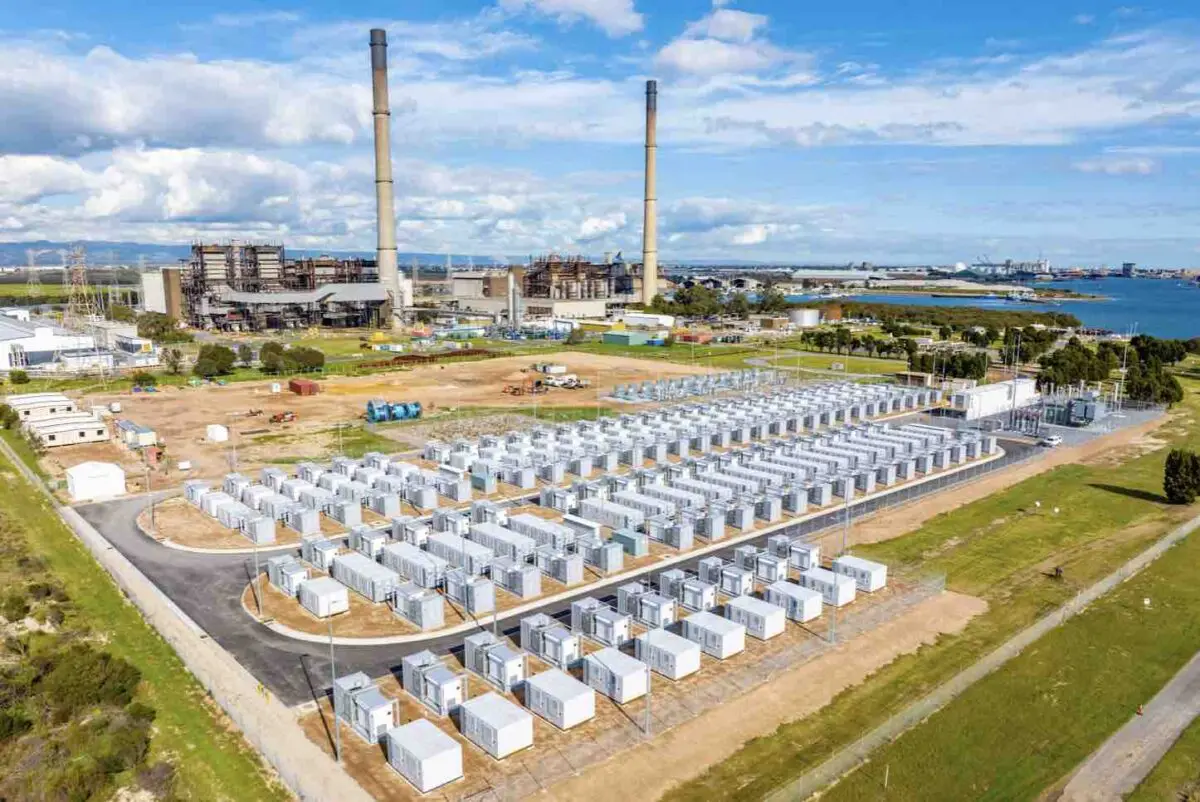AGL has hailed the performance of its first operating big battery – at Torrens Island in South Australia – saying it was a key part of its transition to flexible capacity to support wind and solar, and it reiterated its complete lack of interest in nuclear power.
Torrens Island has traditionally played host to AGL’s biggest gas generators, and is now one of three big energy hubs that are being transitioned from fossil fuels to clean energy. The 250 MW, 250 MWh battery at the site is the first the company has built and owns itself.
According to AGL CEO Damien Nicks, the Torrens Island battery was one of the star performers in its portfolio in the last financial year, delivering profits of $28 million (before tax, interest and depreciation) in its first nine months of operations.
That is still a fraction of the money it gleans from its coal-dominated thermal portfolio, but the prominence of storage promises to grow significantly in coming years as it increases its battery capacity 20 fold before the end of the decade.
AGL has since commissioned the smaller Broken Hill battery and is already building a much larger 500 MW, 1,000 MWh battery at Liddell, the site of its shuttered coal fired power station in the Hunter Valley. It has big battery plans at the Tomago smelter, at Pottinger in the south west of NSW, and in Queensland and South Australia.
That Liddell site is one of seven sites targeted by the federal Coalition to build large scale nuclear or small modular reactors, and which it says can be up and running by 2035.
The industry believes those timelines are nonsense and fanciful. Most believe nuclear is not possible in Australia until the mid to late 2040s, at the earliest, because of the political, regulatory and social licence issues, not to mention the extraordinary capital costs, delays and supply chain issues that afflict the nuclear industry.
Nicks plans to close the last of his company’s coal fired generators by 2035, and its Bayswater plant next to Liddell by 2033. He says the company has no intention of waiting for nuclear.
“We have been very clear on that one,” Nicks told Renew Economy in an interview on Wednesday. “We need to replace that coal before it shuts down. When coal goes, if we don’t get the replacement capacity in place we don’t have a business.”
The company nearly trebled its underlying earnings to $812 million in the latest financial year, courtesy of higher wholesale prices (which the regulator says big utilities such as AGL have helped engineer because of their domination of markets), more coal output from Loy Yang A and Bayswater, and higher consumer margins.
AGL says it is particularly pleased with the performance of the Torrens Island battery. “It is generating returns at the top end of our targeted expectations for this asset class,” said CFO Gary Brown.
“This and other batteries will continue to have an increasing impact on our earnings mix going forward as we deploy more assets which are supported by the higher cap prices and earnings observed across the NEM (National Electricity Market) in FY24.”
There are two important themes to pick up from that sentence, on flexibility and the recycling of profits.
AGL says it is focused on flexible assets, including a battery storage development portfolio boosted by the newly announced purchase of Firm Power, as part of its plans to build 12 GW of new assets over the coming decade.
It has also purchased solar developer Terrain Solar, but most of its wind and solar development will take place in partnerships and joint ventures, including with Someva Renewables, Tilt Renewables, and a 2.5 GW offshore wind project in Gippsland Victoria.
It has been investing in flexible gas assets in all mainland states, and is developing two pumped hydro assets, and introducing more flexibility into its two remaining coal fired generators.
The biggest component, in capacity terms, will be in battery storage assets which will be mostly owned in house.
That’s the part of the market it is keen to control, and may raise questions and concerns about the continued domination of the big players in the wholesale market, particularly given recent observations by the Australian Energy Regulator when it looked at the price spikes which dominated the market in May and June.
Nicks defended the company’s bidding strategy in the interview with Renew Economy. “We bid in the market at high prices and at low prices. That is the market mechanism we play in, and we need to make sure our assets are performing in this market,” Nicks said.
But he noted that while AGL has been reaping higher profits, its dividend ratio has fallen – to around 50 per cent – and the extra money is being ploughed back into the energy transition.
AGL has also been expanding its decentralised assets under “orchestration” to 1.25 GW, and has invested $150 million in a partnership and equity stake in Kaluza, which has developed a smart customer platform.
But it continues to spend on its thermal assets, with planned spending of $400 to $500 million year, mostly on its Bayswater and Loy Yang A generators, which both plan major upgrades and planned outages over the next 12 months,.







